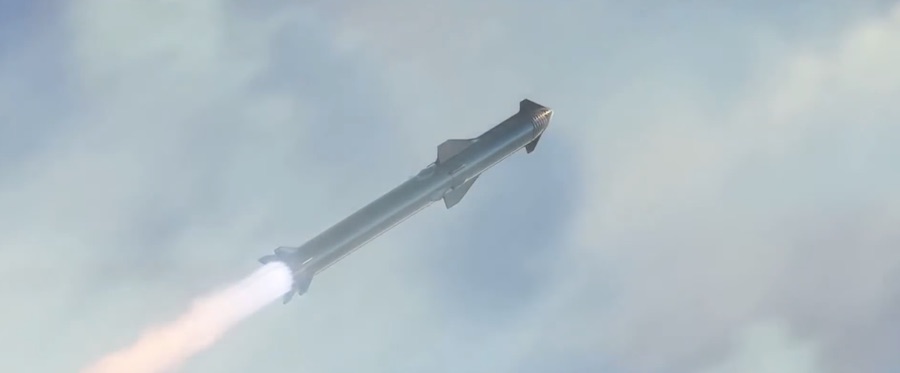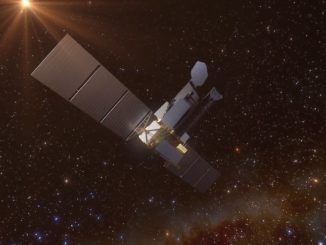A prototype for SpaceX’s Starship vehicle imploded during a pressurization test at the company’s facility in South Texas Friday night, an event captured on video by local residents.
The stainless steel structure ruptured after being loaded with cryogenic fluid at SpaceX’s seaside launch complex at Boca Chica, Texas. SpaceX was testing the test article’s structural integrity by loading it with super-cold liquid nitrogen at high pressure.
The Starship test article, designated SN1, was built at a nearby fabrication site on SpaceX property before rolling down the road to the company’s test stand and launch pad. The Starship is SpaceX’s next major rocket program, and is designed to be fully reusable.
A similar Starship prototype ruptured during a similar pressure test in November.
Elon Musk, SpaceX’s founder and CEO, said last September that the company’s first full-scale Starship vehicle, known as Starship Mk1, would perform an atmospheric test launch to an altitude of 65,000 feet (20 kilometers).
But SpaceX scrapped those plans and repurposed the Starship Mk1 vehicle as a ground test article. It blew its top Nov. 20 during a cryogenic pressure test.
“That was not completely unanticipated,” said Gwynne Shotwell, SpaceX’s president and chief operating officer, in December. “That was really kind of a manufacturing prototype. And as we were building it, we were saying, you know, this is probably not the right way to do this. But we wanted to finish the build anyhow … So we decided to pressurize it. There were cracks in it, and we blew the lid off.”
SpaceX assembled a modified Starship vehicle — the Starship SN1 — at Boca Chica to begin the next phase of testing.
Images taken Saturday at Boca Chica showed wreckage from the Starship SN1 strewn around the test site. It’s not expected to be salvaged.
“It’s fine, we’ll just buff it out,” Musk joked on Twitter.
He said a “puck” at the base of the vehicle, where Raptor engines would be mounted on a flight test or test-firing, may have been source of the failure.
“There’s a puck at the base that takes the engine thrust load,” Musk tweeted. “Don’t shuck the puck!”

On orbital missions, the Starship is designed to launch on top of a massive booster SpaceX has named the “Super Heavy.” Fitted with approximately 37 methane-fueled Raptor engines, the Super Heavy booster will propel the Starship craft into space.
Six Raptor engines will be mounted on the Starship vehicle itself, when the rocket is configured for orbital flight. Both the Super Heavy and Starship will return to Earth for vertical landings to be flown again, and SpaceX says the Starship is capable of landing on other planetary surfaces, such as the moon or Mars.
The entire Super Heavy/Starship vehicle will stand nearly 40 stories tall, which would make it the largest rocket ever built.
Late last year, SpaceX paused development of a Starship vehicle on Florida’s Space Coast to focus on construction and testing in South Texas. The company is building a new hangar at South Texas to provide more controlled working conditions there — the Starship Mk1 was assembled outdoors — and officials have revived plans to produce Starship hardware at a new factory at the Port of Los Angeles, after halting a previous plan to build a new manufacturing facility there.
“We started scrappy,” Shotwell said in December. “We’re going less scrappy. The way we built that (Mk1 vehicle), we had not only horizontal welds, but we had vertical welds. We don’t do many vertical welds. We really want to weld in rings. We do have vertical welds on Falcon, but it’s friction stir welding in a controlled environment. That’s a lot easier.
“So it was good to get that done,” she said. “We learned a lot, and it’s time to move on to the next way of building.”
SpaceX is already working on Starship SN2.
“We’re stripping SN2 to bare minimum to test the thrust puck to dome weld under pressure, first with water, then at cryo,” Musk tweeted.
He said it will hopefully be ready for testing in a few days.
Email the author.
Follow Stephen Clark on Twitter: @StephenClark1.



